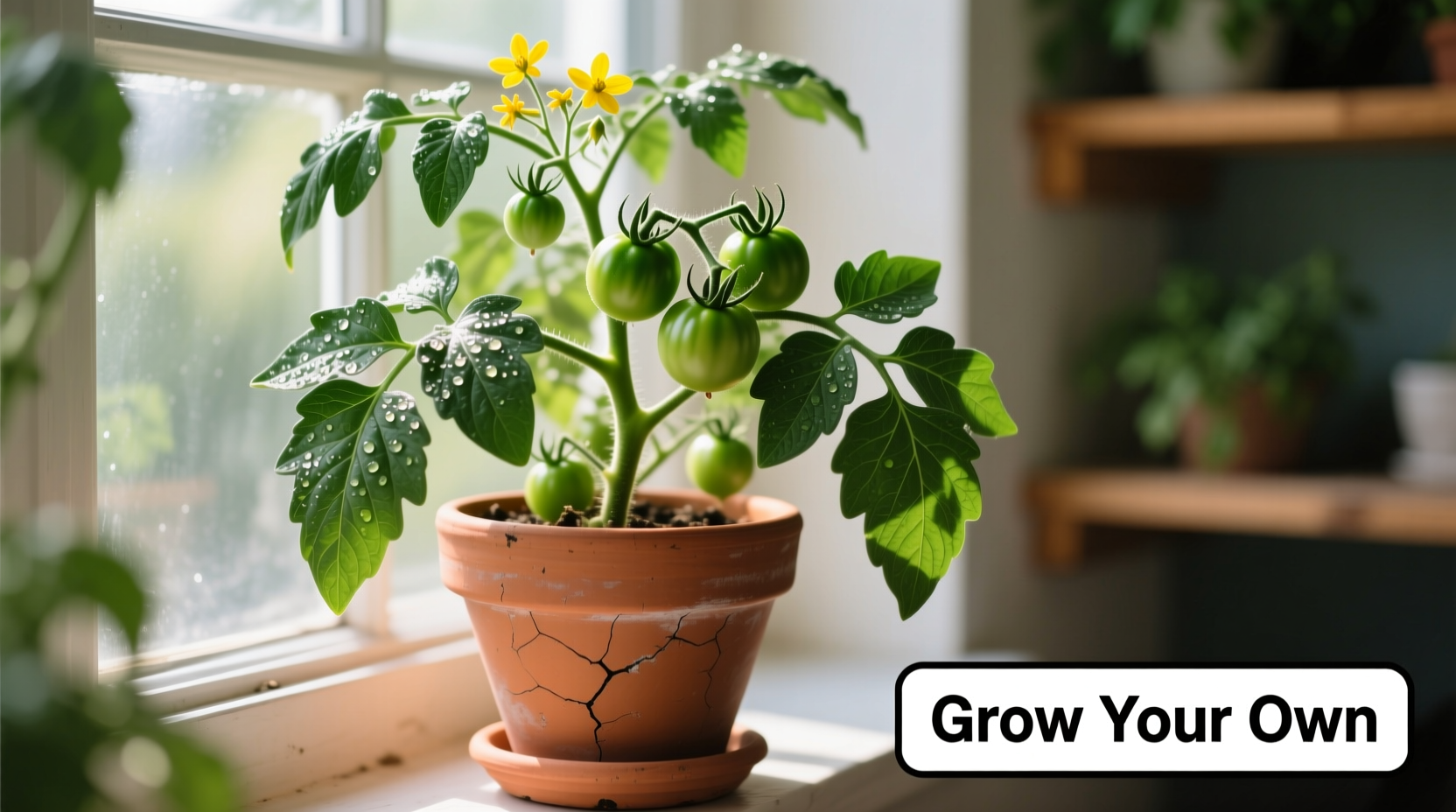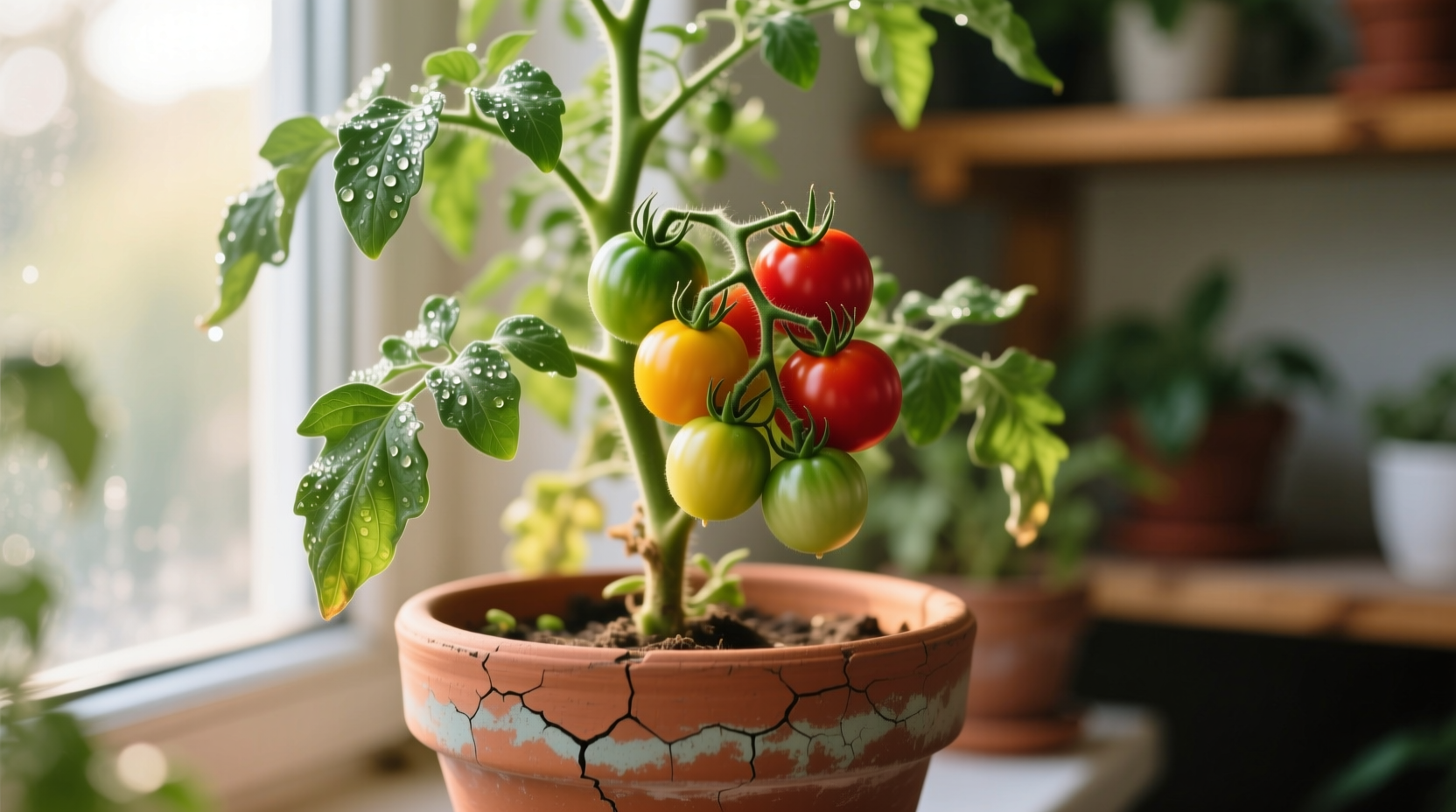For healthy tomato plants with maximum yield, use a minimum 5-gallon container for determinate varieties and 10-15 gallons for indeterminate types. Smaller pots (1-3 gallons) lead to stunted growth, water stress, and reduced fruit production. Proper pot sizing directly impacts root development, nutrient uptake, and overall plant vitality.
Why Pot Size Determines Your Tomato Success
Tomato plants develop extensive root systems that directly correlate with above-ground growth and fruit production. Research from the University of California Agriculture and Natural Resources shows container-grown tomatoes in undersized pots produce up to 40% less fruit than those in properly sized containers. The root-to-shoot ratio must remain balanced for optimal photosynthesis and nutrient distribution.
Your Step-by-Step Pot Selection Guide
| Tomato Type | Minimum Pot Size | Root Depth Requirement | Yield Impact |
|---|---|---|---|
| Determinate (Bush) | 5 gallons (19L) | 12-18 inches | 20% reduction in small pots |
| Indeterminate (Vining) | 10-15 gallons (38-57L) | 24-36 inches | 40% reduction in small pots |
| Dwarf Varieties | 3-5 gallons (11-19L) | 8-12 inches | 15% reduction in small pots |
When Smaller Pots Might Work (Context Boundaries)
While larger containers generally produce better results, smaller pots (3-5 gallons) can work under specific conditions:
- Short-season varieties harvested before full maturity
- Container gardens with automated irrigation systems
- Cooler climates where root growth is naturally slower
- Dwarf tomato varieties specifically bred for containers
The University of Minnesota Extension notes that in northern climates with shorter growing seasons, slightly smaller containers may suffice since plants won't reach full potential size before frost.
Material Matters: Choosing Beyond Just Size
Pot material significantly affects root zone temperature and moisture retention:
- Plastic containers retain moisture better but heat up faster in sun
- Fabric pots promote air pruning of roots, creating denser root systems
- Glazed ceramic provides excellent insulation but is heavy and expensive
- Self-watering containers allow slightly smaller sizes (reduce by 1-2 gallons)

Seasonal Growth Timeline and Pot Requirements
Tomato root development follows a predictable pattern that affects pot needs:
- Transplant stage (Weeks 1-3): Roots establish in initial soil ball - 2-3x starter pot size sufficient
- Vegatative growth (Weeks 4-6): Rapid root expansion requires minimum recommended size
- Flowering stage (Weeks 7-9): Root system must support fruit development - undersized pots cause blossom drop
- Peak production (Weeks 10-12): Mature root systems need full container volume for nutrient uptake
According to Oregon State University Extension, tomatoes develop approximately 1.5 inches of root growth per day during peak season, requiring adequate container space to accommodate this expansion.
Avoid These 3 Common Container Mistakes
Even with proper sizing, these errors sabotage tomato success:
- Inadequate drainage: Ensure at least 6 drainage holes (1/2 inch diameter) in bottom
- Soil compaction: Use 60% potting mix, 30% compost, 10% perlite for optimal aeration
- Improper placement: Pots against walls create microclimates that overheat roots
Troubleshooting Container Tomato Problems
Identify pot-related issues by these symptoms:
- Yellow lower leaves: Often indicates root-bound plant needing larger container
- Cracked fruit: Fluctuating moisture from small pots causes rapid expansion
- Stunted growth: Roots circling pot interior restrict nutrient uptake
- Blossom end rot: Calcium deficiency exacerbated by inconsistent watering in small pots
Maximizing Yield in Limited Space
For balcony or patio gardeners with space constraints:
- Choose compact varieties like 'Patio Princess' or 'Tiny Tim'
- Use vertical trellising to direct growth upward, not outward
- Implement drip irrigation for consistent moisture in smaller containers
- Refresh top 2 inches of soil monthly with compost during growing season
Remember that proper container selection for tomatoes isn't just about current size—it's about accommodating future growth. The University of Illinois Extension confirms that tomatoes grown in containers that are too small develop shallow root systems that cannot access deeper moisture reserves during heat waves.
FAQ: Tomato Container Questions Answered
Can I grow tomatoes in a 3-gallon container?
Dwarf tomato varieties can survive in 3-gallon containers, but expect reduced yields. Standard varieties require at least 5 gallons for determinate types and 10+ gallons for indeterminate varieties to develop proper root systems and produce full harvests.
How deep should a tomato pot be?
Tomato pots should be at least 12 inches deep for determinate varieties and 18-24 inches deep for indeterminate types. The root system typically extends as deep as the plant is tall, so adequate depth prevents roots from circling the bottom of the container.
Do tomatoes grow better in bigger pots?
Yes, within practical limits. Research shows tomatoes in 15-gallon containers produce 25-30% more fruit than those in 5-gallon containers. However, pots larger than 20 gallons offer diminishing returns and become difficult to manage. The optimal size balances root space with practicality.
What happens if my tomato pot is too small?
Oversmall pots cause root binding, water stress, nutrient deficiencies, and reduced yields. Plants may show stunted growth, yellowing leaves, blossom drop, and fruit cracking. In severe cases, plants become permanently stressed and never recover even after transplanting to larger containers.











 浙公网安备
33010002000092号
浙公网安备
33010002000092号 浙B2-20120091-4
浙B2-20120091-4